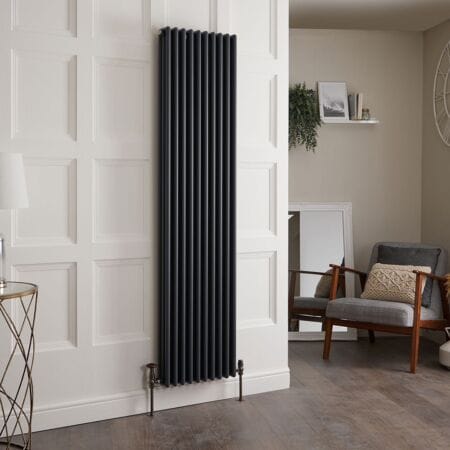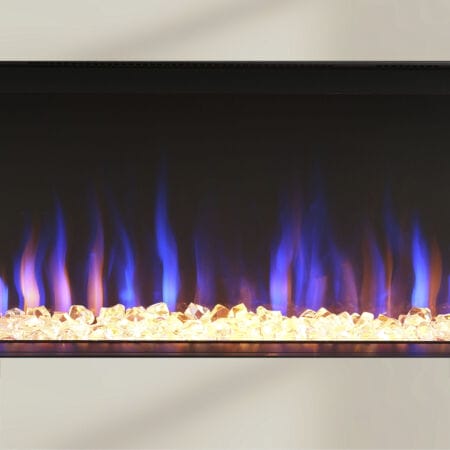Contents
ToggleWhat we’ll cover…
- The advantages of a well-maintained, eco-friendly home for boosting property value when selling
- How an effective central heating setup can add value while remaining eco-friendly
- Installing a new boiler:
- Reducing energy bills with high efficiency and low running costs
- A 5-10 year warranty to provide peace of mind
- Buyer reassurance without unexpected repair bills
- The importance of a regular boiler service
- Smart thermostats and meters:
- Remote heating control via app
- Energy usage measurements to keep costs down
- Compatibility with a variety of modern boilers
- Proper insulation for automatic heating bill reduction
- Frequent radiator bleeding to ensure they heat up faster and expend less energy
- Underfloor heating benefits:
Increase property value with a home heating vice
If you keep your property well maintained and make it as eco-friendly as possible then you can be sure to get the best price and an eager buyer should you decide to sell. Modern day buyers tend to be more conscious of the environment and their footprint. With this in mind, we take a look at how a decent central heating system can add value to your property, whilst remaining eco-friendly.

New boiler
New boilers may be considered quite an investment, as they aren’t cheap, at anywhere between £900 and £3000.
However, they will lower your energy bills due to having low running costs plus high efficiency.
A new boiler will often include a 5, 7 or 10-year warranty which gives you peace of mind should anything go wrong with it.
It also reassures any potential buyers, knowing they won’t face unexpected bills shortly after moving in.
Make sure to have your boiler serviced regularly to keep it in tip-top condition.

Smart thermostats & meters
Many modern boilers are compatible with smart thermostats and meters.
You can control them via an app or smart device, as well as measuring how much energy you’re using around the house.
In the winter months, you can turn on your heating in advance so that the house is warm when you get in and even delay the timer if you might be home later than anticipated.
By staying in control of your heating and seeing which devices use more energy than others, you can put measures in place to keep your costs low and your efficiency high.

Efficiency
Reducing your energy bills doesn’t have to only come from using less energy.
Insulating your property properly will automatically reduce your bills because you’ll require less heating for a start.
You can do this yourself by buying loft insulation from a DIY shop or asking an expert for advice.
There are certain government schemes that offer free insulation depending on where you live and whether you meet certain criteria.
Contact your local government authority to find out more.

Radiators
Bleed your radiators. It’s easy and doesn’t take much time, yet it can make a massive difference. If your radiators feel cooler than they should when the heating is on then they’ll need bleeding.
Turn off your central heating, use a radiator key or a flat blade screwdriver and insert it into the valve at the side of the radiator.
Have a cloth at the ready to catch any drips and then turn slowly in an anti-clockwise direction. If you hear hissing then your radiator is releasing the stored-up gas. The hissing will continue until water starts to come out.
Quickly turn the valve back to where it was and you’re done. Your radiators will now use far less energy because they’ll take less time to heat up.
You can also accelerate the energy efficiency with which your radiators perform by investing in smart heating solutions, enabling precise and custom temperature control, and for radiators to be used only when required so as to not waste energy.

Hidden central heating
Underfloor heating has become really popular because it heats your whole room in an economical way. It’s particularly popular in bathrooms because it’s cosy, especially during the winter months.
Wet underfloor heating systems have pipes that run hot water through them in order to heat the floor above. They can be linked to your boiler and only need to run at a temperature of around 29 degrees or less, as opposed to radiators that need to run at around 65-75 degrees.
Underfloor heating consumes less energy which, in turn, lowers your bills. UFH has a lifetime guarantee and requires virtually no maintenance, making it an appealing feature to any prospective buyer.

If you’ve done all of the above and you’re still struggling to sell your house then The Property Buying Company can help.
They’ll buy your property and offer you a fair price so you’ll sell your house fast and have a hassle-free experience.
Frequently Asked Questions
A hose pipe is required to drain down a central heating system, so water can be easily transported from home radiators to an outdoor drainage system for release. This process can alleviate a build-up of pressure to ensure your radiators perform to their optimal capacity.
For a more detailed insight, explore our blog, how to drain down a pressurised system.
Essentially, the higher the temperature is set, the quicker and more effectively the connected central heating radiators will be able to heat your home.
Contemporary boilers often incorporate a digital dial which enables the user to set the temperature manually. It is recommended that the output temperature for central heating radiators used in cohesion with combi boilers is set at 75 degrees, with the water temperature at 60 degrees.
To explore some inspirational central heating radiator designs, take a look at our blog, Top 40 Central Heating Radiator Transformations.
You should switch off your central heating before attempting to bleed central heating radiators, to make sure the radiator itself is not too hot to touch.
There is also the possibility that water can spray out of central heating radiators when they are being bled, so it is much safer to turn off the central heating to reduce the risk of scalding hot water emerging.
For further information about safely bleeding central heating radiators, visit our dedicated blog, How To Bleed A Radiator. Or, for inspiration regarding how central heating radiator designs can enhance your home, take a look at our piece entitled, Top 40 Central Heating Radiator Transformations.
It’s a very good idea to switch on your central heating and hot water supply on occasion during the warmer summer months.
When left unused, the pump and diverter used to circulate water around the radiators and to the hot water cistern can seize up.
Turning on the central heating and hot water, even just briefly, can help to prevent this from happening.
Jess has a passion for interior design and wants to inspire people to look at radiators as home decor. She enjoys keeping on top of the latest design and heating trends to ensure the Advice Centre has all the information and inspiration homeowners need to make the best choice for them.




